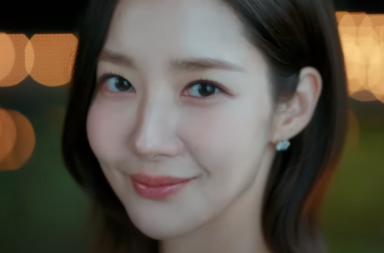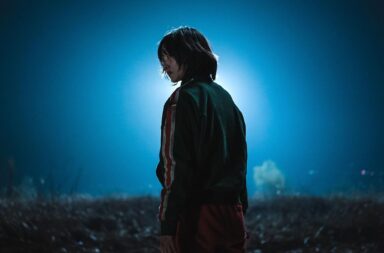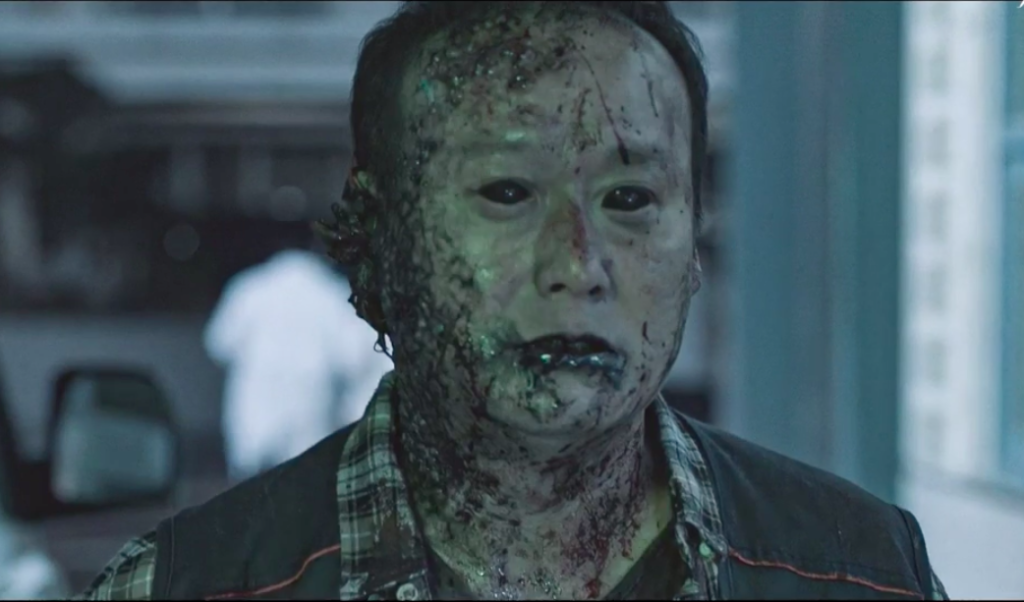
The last few years in Korean film and TV have shown a renewed taste for blood, gore and the supernatural. With cinema’s Train to Busan and #Alive, along with Netflix’s period zombie horror Kingdom and webtoon-adapted Sweet Home, the rise of the zombie is clear to see. Mindless, out for blood, rampaging and decaying, this particular monster can invoke many ideas—from conformity to hysteria disease—through to the unconscious.
The latest drama to take on the potential of these vicious un-humans is OCN’s Dark Hole. Busy with a large number of plot lines and mythos to establish, the show nonetheless promises an intriguing take on its own monstrous mutants, if risking slight one-dimensionality or convolution on the way. While the opening episodes are heavy on the set-up and broad with the characters’ brushstrokes, the series has so far developed a confidence to delve deeper into its own dynamics, and could prove an exciting new avenue for the violently undead if it holds its nerve.
This review contains spoilers.
The “dark hole” that gives the drama its title is the, as yet ambiguous, centre of the show’s most ambitious element: its supernatural mythology.
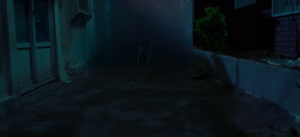
The hole in question is a giant sinkhole in the forest at the edge of Muji City, which seems to hold a malevolent power, as well as an ability to emit black smoke. Much like the mysterious Smoke Monster in Lost, or even the black oil of the X-Files, this gas has pretty powerful abilities, turning most who inhale it into ravenous, raging “mutants” with black eyes, black blood, and a blinding urge to kill. I say blinding quite specifically as—unusually for zombie-style narratives—we actually get to see the point of view of these mutants as soon as we first meet one. This encapsulates the main point that makes Dark Hole a step away from the traditions of this genre; it shows the motivation and partial origin of these monsters.
Often with classic horror, a key part of the fear is a lack of clarity as to where and why the threat has developed. In Train to Busan and #Alive there is next to nothing offered to explain their respective zombie outbreaks, and Kingdom has only reached a partial explanation after two series. So, it is a bold move for Dark Hole to hint at a very detailed and purposeful explanation only thus far.
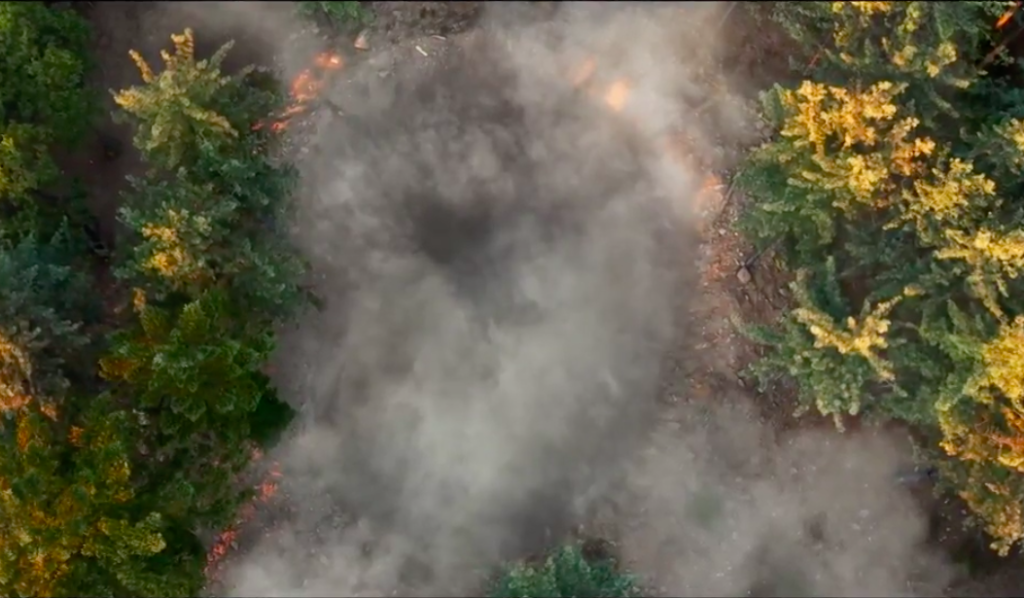
What we’ve seen of that explanation by episode six is that those infected by inhaling the noxious black smoke start to see hellish visions of their own darkest moments of victimisation.
Shot from their own point of view in a shocking red filter, we get a literal viewpoint as to what is happening in these monsters’ minds to induce their behaviour. It’s a clever way to add depth to the violence these creatures commit once infected. We can see that it comes from an internal point of weakness and fear.
Moreover, as the series progresses, these glimpses into the mutants’ perspective show us a malevolent, laughing voice persuading individuals into murderous acts. This suggests some kind of central person or force controlling these monsters, which is confirmed as the series moves on. Steely detective Lee Hwa-sun (Kim Ok-bin), who herself has inhaled some black smoke, though is as yet resistant to its full effects, meets this elusive figure in a dream in episode four.
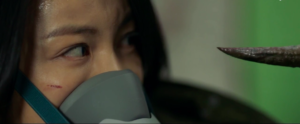
Laughing in a mystical dark place, a floating orb with tendrils looping out, this figure gloats to the detective that it makes the mutants behave as they do “because it’s fun”. This figure further develops the possible origins of this show’s horror, begging questions about what it is, what its motives are and what power it holds. This is a far cry from the usual mindlessness behind these kinds of creatures in Korean horror.
Another intriguing difference in Dark Hole from most of the monstrous cannon Korea has lately been producing is the inclusion of a traditional Korean shaman character. As the zombie/vicious monster is not native to Korean folklore, these traditions do not usually appear in these narratives. However, in Dark Hole, we are introduced to the shadowy Kim Sun-nyeo (Song Sang-eun), an enigmatic shaman who appears to have formed a connection with a being controlling the smoke.
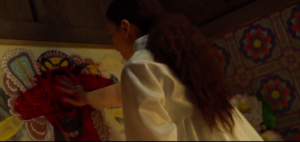
Performing dark rituals using her own blood, and casually assembling a traditional shamanic altar whilst trapped in the city hospital, this character is shown to have clear mystical abilities that relate to her practices. What exactly these abilities are, and how they relate to shamanism, is not yet clear. However, her inclusion as a character shows an intent to utilise Korean folklore that ties the story so much more to something unique to its culture.
The characters of Dark Hole, aside from Kim Sun-nyeo, are multiple, as are their storylines. To give just a few examples from the first six episodes we have: a detective hunting for her husband’s killer in Muji City; a former police officer-turned-independent-truth-seeker whose brother died in a hit-and-run after arguing with him; a corrupt police chief whose lieutenant has a heavily-pregnant wife; and a megalomaniacal school principal with a past as a torturer. And that’s only a small sample.
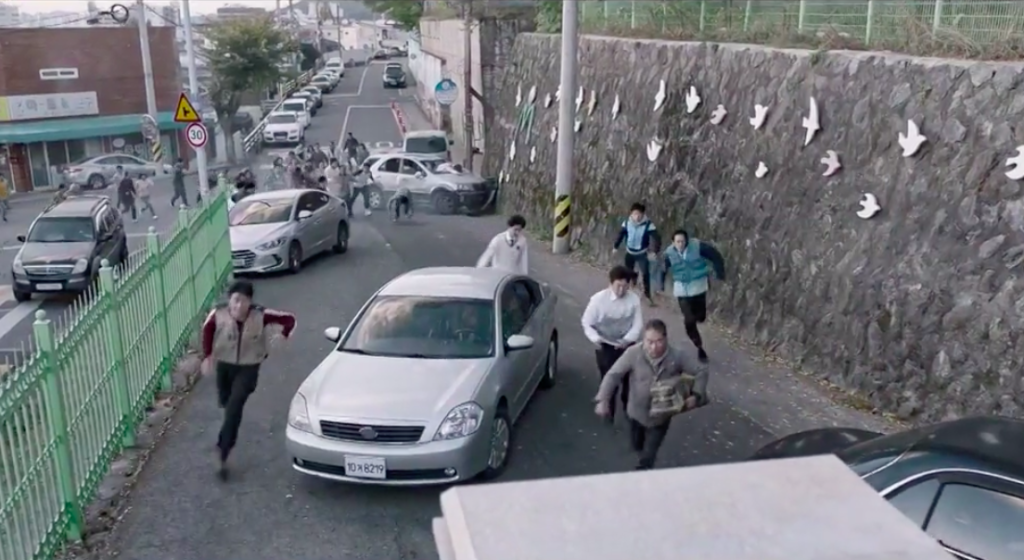
Though none of these storylines is difficult to follow, they are also fairly simplistic ciphers in the horror/apocalyptic genre for the most part. The detective is hardened yet driven by tragic love, the pregnant wife is definitely going to give birth at an inconvenient moment, and the evil principal’s complete disregard for others ultimately leads to his own infection. It’s paint-by-numbers plotting in the case of most of these characters, and therefore in their characterisations too.
This isn’t necessarily an issue in a genre where excitement and thrill are the main drives—you don’t need emotional investment to scream on a rollercoaster—but more depth from the characters will only help the audience root for them more when they are in peril.
That peril is another point that Dark Hole gets more comfortable with as it progresses. Just as with the characterisation, the pacing of the plot follows established formulas. The first two episodes are expedition heavy, with an arsenal of Chekhov’s guns ready to be fired. These guns are fun, if not sophisticated.
“Ah, a door in a public building that just won’t lock! Gosh darn, can’t be too important though”.
Spoiler: it is important. But once we’ve had it spelt out on who everyone is, and what is generally at stake, the episodes can start to build up more exciting set-pieces.
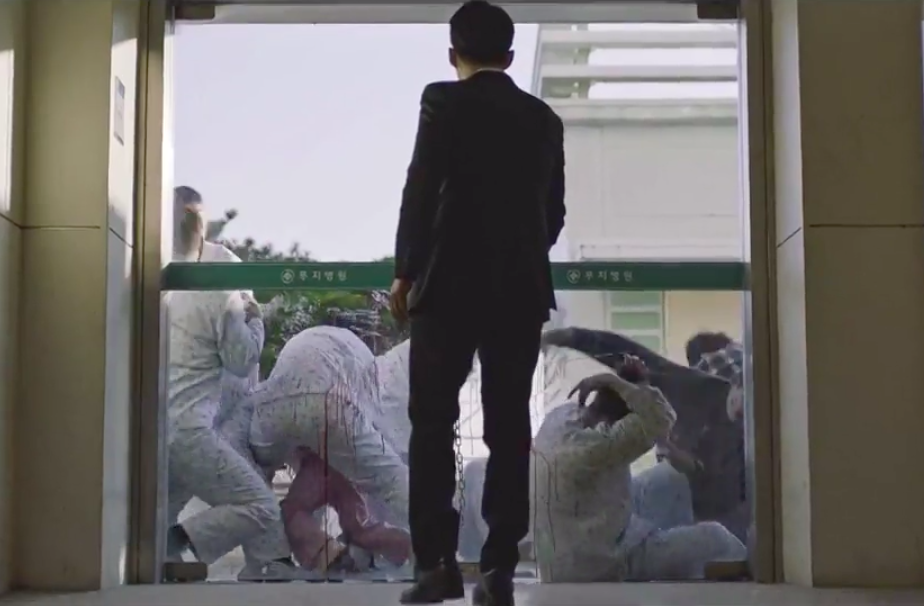
The best of these come from the expeditions various characters make to search for essential items or loved ones—the key drives to travel in apocalyptic scenarios.
In episode five, we are treated to the parallel missions of four people trapped in the school hunting for medication, as three policemen in the hospital similarly search for possible survivors. The intercutting of these two stories builds tension well, and illustrates the similarity of the nature of survival in both situations. As the characters stalk through corridors, following memorised maps or the sound of a weak walkie-talkie giving instructions, the threat of the mutants starts to feel more ominous. It also allows for characters to develop, through betrayal, moments of bravery, or even simple small-talk. These set-pieces provide a neat build-up of pace that gives nuance to the show’s overall tone.
Hopefully it’s these kinds of moments, suspenseful, slow and well-measured, that will become the main currency of Dark Hole. Especially now that we are fully in the midst of a city collapsed by mutant zombie monsters. From the very first scenes of the entire series we see a flash-forward battle between the central detective and an enormous, tentacled creature in some kind of factory, indicating we have a lot more to discover on the monstrous side of things. These origins are an exciting new experiment for the horror drama genre, and could have even more intrigue if they successfully incorporate Korean shamanism.
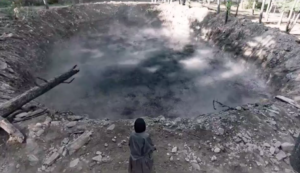
Now that Dark Hole has planted all the seeds of truly complex monstrosities lurking in the forest, and worked out all its awkward introductions, signs of confidence are emerging. If the show can use this to take risks with the narrative direction, and further build creative and tense set-pieces, it promises to be a uniquely thrilling addition to the ‘zombie-esque’ genre of Korean drama.
(Images via: OCN.)

